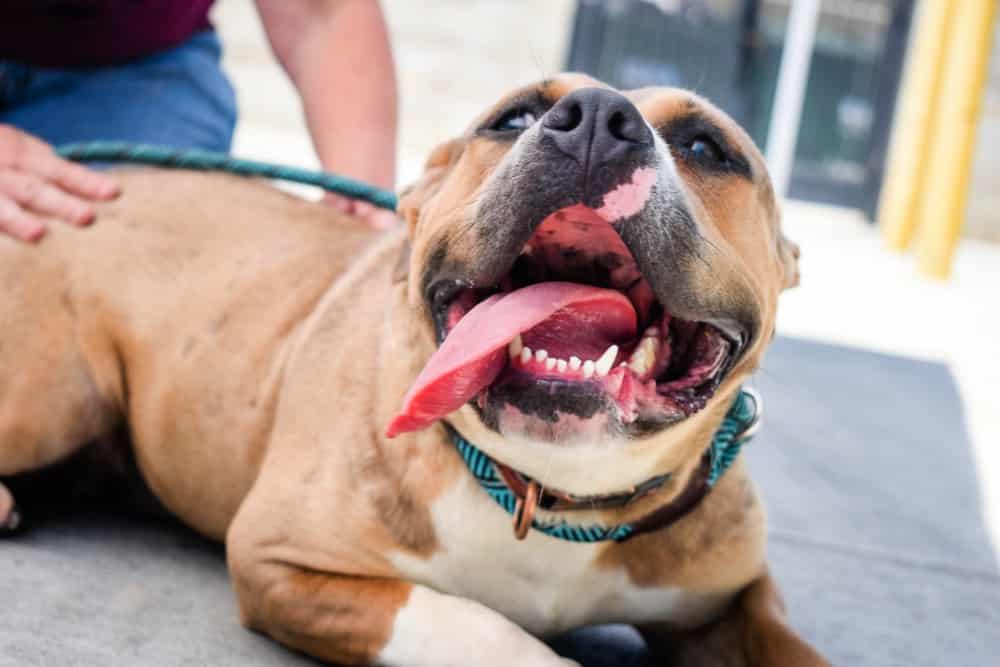Pitbulls, often misrepresented by the media, are a misunderstood breed. Their perceived high level of aggression isn’t exclusive to them. In this article, we present factual information on Pitbulls, aiming to debunk misconceptions.
A lack of proper training and socialization can lead to aggression in any breed. Contrarily, a majority of Pitbulls are affectionate companions and are suitable for families.
Contrary to their public image, Pitbulls are known for their loyalty and affectionate nature.
If you’ve ever had the pleasure of loving and being loved by a Pitbull, you know they’re a unique breed.
Despite their muscular appearance and broad chests, Pitbulls are generally affectionate, loyal, and playful dogs.
However, they often suffer from negative stereotypes, painted as violent and difficult to train.
This is potentially a result of misinformation and a few misconstrued “facts” about them.
In a bid to curtail dog attacks, some areas have even instituted a ban on this breed.
The history of Pitbulls, particularly their engagement in historical British bloodsports against bears and current illegal dogfights, might contribute to this image. However, their past should not obscure their true nature.
As per expert dog trainers, a dog’s upbringing significantly impacts its temperament, often outweighing the breed’s influence. Numerous specialists work diligently to protect these puppies.
In response to this understanding, some places have backtracked on their pitbull bans.
1. What do Pitbulls look like?
The appearance of Pitbulls is characterized by a muscular and athletic build. The breed type includes several varieties of dogs, including the American Pit Bull Terrier, the American Staffordshire Terrier, and the Staffordshire Bull Terrier. Hence, the physical attributes may differ across these breeds. Yet, some commonalities set the foundation of their overall physique.
Their head is typically broad and in the shape of a wedge. On this head, rest two almond-shaped eyes that can come in a myriad of colors, including brown, blue, and hazel. This is complemented by ears that are either erect or semi-erect. A distinctive characteristic of many Pitbulls is their wide, powerful jaw, adding to their tough dog persona.
Adult Pitbulls usually weigh between 30 and 85 pounds, and stand about 17 to 21 inches tall at the shoulder. Highlighting their athletic build are their well-defined muscles, especially around the neck and chest area. Their dense and glossy coat can come in virtually any color or pattern including solid, brindle, and spotted.
The breed has a smooth, short coat that is fairly easy to manage, requiring only weekly grooming to stay in top condition. Their tail is generally short in length and tapers to a point at the end.
Development of physical traits in Pitbulls depend on factors such as genetics, diet, and exercise. Despite some negative perceptions, these dogs display a range of intriguing physical characteristics that make them distinctive.
Pitbulls are a diverse breed with varying shapes and sizes. They are commonly characterized by their short fur coats.
These dogs are built like athletes, with well-developed muscles and square-shaped noses and faces.
Pitbulls possess almond-shaped eyes and rose-like ears – a hallmark of their breed.
Often, breeders choose to crop their Pitbull’s ears. Additionally, these dogs have notably straight and long tails.
Here are a few fascinating Pitbull facts that may shift any preconceived notions about this often-misunderstood breed:
READ ALSO: Pitbull Vs German Shepherd Fight To Death
2. No locking jaws
The Pitbull breed often encounters misapprehensions, especially about its jaw structure. The most common falsehood is that Pitbulls have “locking jaws,” which is entirely baseless.
Fact: The jaw design of Pitbulls is not any different from other dog breeds.
Being a terrier breed, some Pitbulls might demonstrate more zeal in grasping and shaking toys. However, this is a characteristic of the breed and not an anomaly.
Some may possess a higher prey drive, which, coupled with their persistence, could make them inappropriate playmates for cats.
As with any breed, proper understanding of your Pitbull’s signals in various environments is critical.

3. World War II heroes
Historically, images of Pitbulls appeared on First World War army recruitment posters. These dogs symbolized bravery, loyalty, and determination at the time.
The U.S. Army even adopted the Pitbull as a mascot for its embodiment of these traits.
Furthermore, Pitbulls have served in military capacities as support dogs. The most renowned of these is Sergeant Stubby, a Pitbull who demonstrated immense courage during the First World War.
Upon his return, Stubby was celebrated as a hero for safeguarding soldiers from mustard gas attacks.
4. Excellent climbers
The Pitbull breed is known for their power and agility. This makes them capable of incredible feats like scaling walls, even those as high as 12 feet.
These dogs are athletic with plenty of energy and tend to be excellent climbers. They are also suitable for roles as service dogs due to their dedicated attitude.
Pitbulls are often chosen as sniffer dogs due to their unwavering commitment and strong desire to satisfy their handlers, outperforming most other dog breeds.
Not only are they eager participants in activities, but they also demonstrate remarkable calmness and composure under stressful situations.

5. Bred to attract bulls and bears
Pitbulls often suffer from a negative reputation.
Originally bred in 19th century England for bull and bear baiting, these dogs were later brought to America by settlers.
While trained to engage in animal combat, they were also conditioned to guard their masters.
Pitbulls, when not adequately socialized, can exhibit hostility towards other dogs. However, their initial breeding purpose focused on combating other animals, not humans.
Contrary to popular belief, a Pitbull is a dog that is easy to train and eager to please its owners.
READ ALSO: Doodle Golden Puppies
6. Mixed-breed dogs are commonly referred to as Pitbulls
Professional breeders and veterinarians often hesitate to classify crossbreeds as Pitbulls due to similar physical appearances. It’s not merely about how closely they resemble Pitbulls, but about common characteristics.
They ascertain the crossbreed’s Pitbull status using DNA analysis. This scientific approach helps in making a more accurate determination.
7. Pitbulls have a vicious bite
Despite their reputation for aggression, Pitbulls’ bite strength is relatively less severe than that of Rottweilers or German Shepherds.
Nonetheless, Pitbulls are known to grip their targets tightly and shake them. In heightened situations, a Pitbull might resist releasing their grip on a person or animal.
In such instances, professionals often resort to breaking a small ampule of ammonia near the dog’s nose. The pungent smell prompts the dog to release its grip and distance itself from the source of the smell.
8. Pitbulls have a history of violence
Due to their origin, Pitbulls may exhibit a predisposition towards combat with other dogs and animals.
They are often associated with unexpected aggression towards other animals and humans. Nevertheless, swift intervention by the owner usually pacifies the Pitbull promptly.
9. Very affectionate dogs
Pitbulls are often misunderstood due to their unearned reputation for being aggressive. This misconception obscures their genuinely friendly nature.
According to professional trainers, Pitbulls rank second in temperament tests, just after Golden Retrievers. Interestingly, Chihuahuas are identified as the most aggressive dog breed.
10. Pitbulls require vaccinations
Like all breeds, Pitbulls must receive regular rabies vaccinations.
Experts highlight a greater susceptibility in Pitbulls to distemper and parvovirus infections.
To ensure their Pitbull pet’s health, owners should take precautionary measures against these dangerous diseases.
READ ALSO: Understanding the Meaning Behind Dog Behaviors
11. The term “Pitbull” has a shady history
The name “Pitbull” originates from a violent entertainment form known as ratting, where rats and dogs fought in a pit. Bets were made on which animal would perish quickest. The ‘pit’ in Pitbull denotes this disturbing practice’s venue.
Instances of Pitbulls attacking people and their use in dogfighting have fuelled fears and misconceptions about this breed, despite their capacity for being lovable and adoptable pets.
All dog breeds can potentially attack, usually due to negligent human care.
Aggressive behavior can be seen in any dog subjected to abuse, disregard, or attack training. This trait does not exclusively belong to Pitbulls or any other breed.